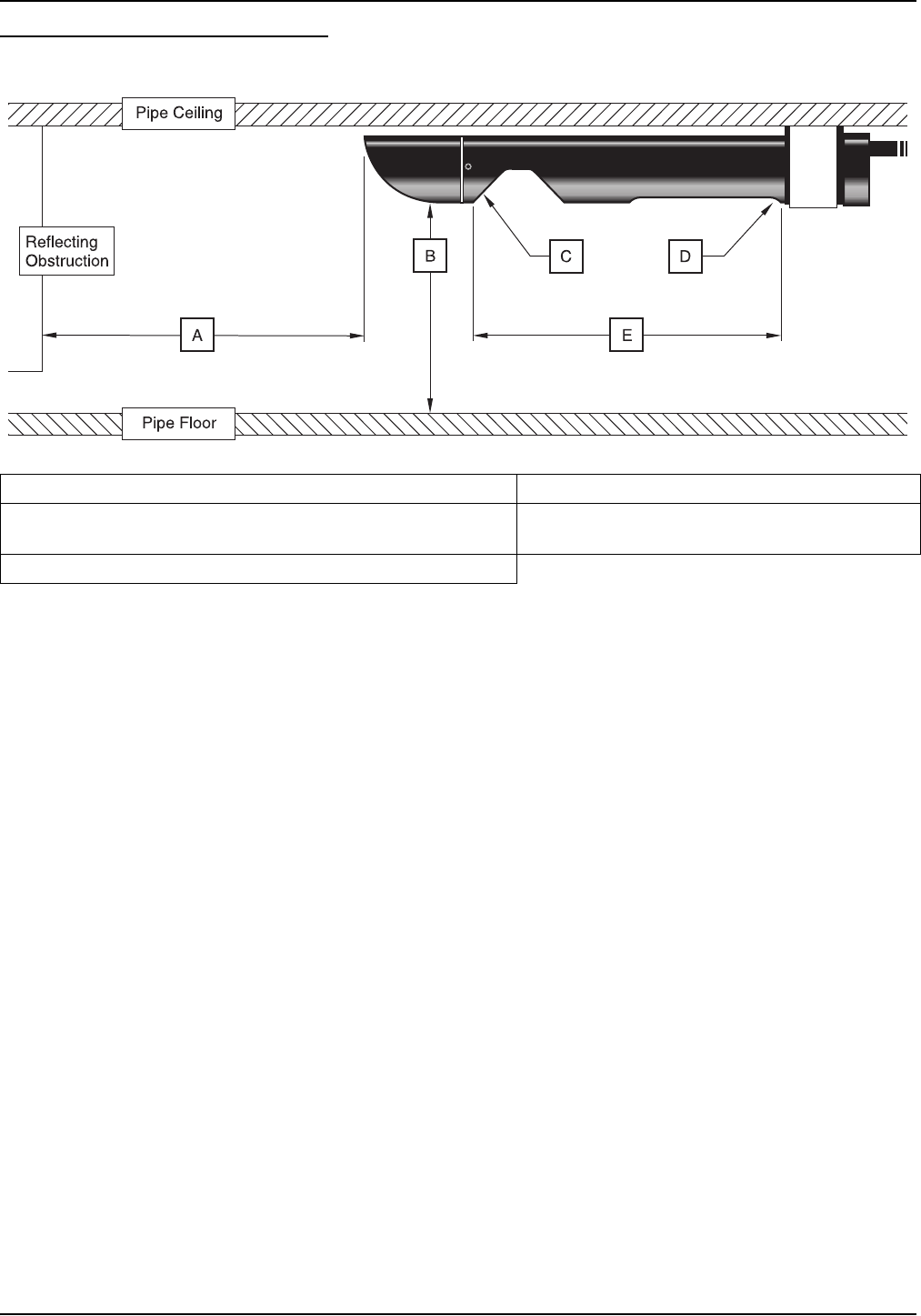
Page 88
In-Pipe Ultrasonic Sensor
Section 4
Figure 38 Side View of In-Pipe
4.11.2 Beam Angle
The narrow beam of sound that emanates from the bottom of the in-pipe
ultrasonic sensor spreads out at an angle of ±12° (-10 dB) as it travels away
from the sensor. This means that if the sensor is mounted too high above a
narrow channel, the beam may be too wide when it reaches the bottom of the
channel. This may cause false echoes from the sides on the channel walls.
4.11.3 Programming the In-Pipe Ultrasonic Sensor
The in-pipe ultrasonic sensor does not require operator programming, unless
more than one sensor option is connected to the 980 Flow Meter. When more
than one sensor option is connected:
1. From the Main Menu, select
OPTIONS > LEVEL SENSOR
2. Select Ultra-Sonic Sensor using the CHANGE CHOICE soft key, then press
the
ACCEPT soft key.
4.11.4 Calibrating the In-Pipe Ultrasonic Sensor
Calibrate the in-pipe sensor each time the sensor is installed at a new site.
Calibrate the in-pipe via one of two methods; Liquid Depth or Sensor Height.
Each method has its own advantages and disadvantages. Liquid Depth
calibration is the recommended calibration method, use the sensor height
method only when Liquid Depth calibration is not an option. An Invisible
Range can also be set which allows the transducer to ignore reflections from
obstructions between the sensor and the water surface, such as ladder rungs,
channel side walls, etc.
1. From the Main Menu, select
OPTIONS > ADVANCED OPTIONS.
A. Minimum distance to reflecting obstruction (2 m (82 in.)) D. Ultrasonic Sensor
B. Distance from Sensor
(Range: 1.6 cm (0.64 in.) to 4.11 m (13.5 ft))
E. Internal Deadband (18.21 cm (7.17 inches))
C. 45° Deflector
